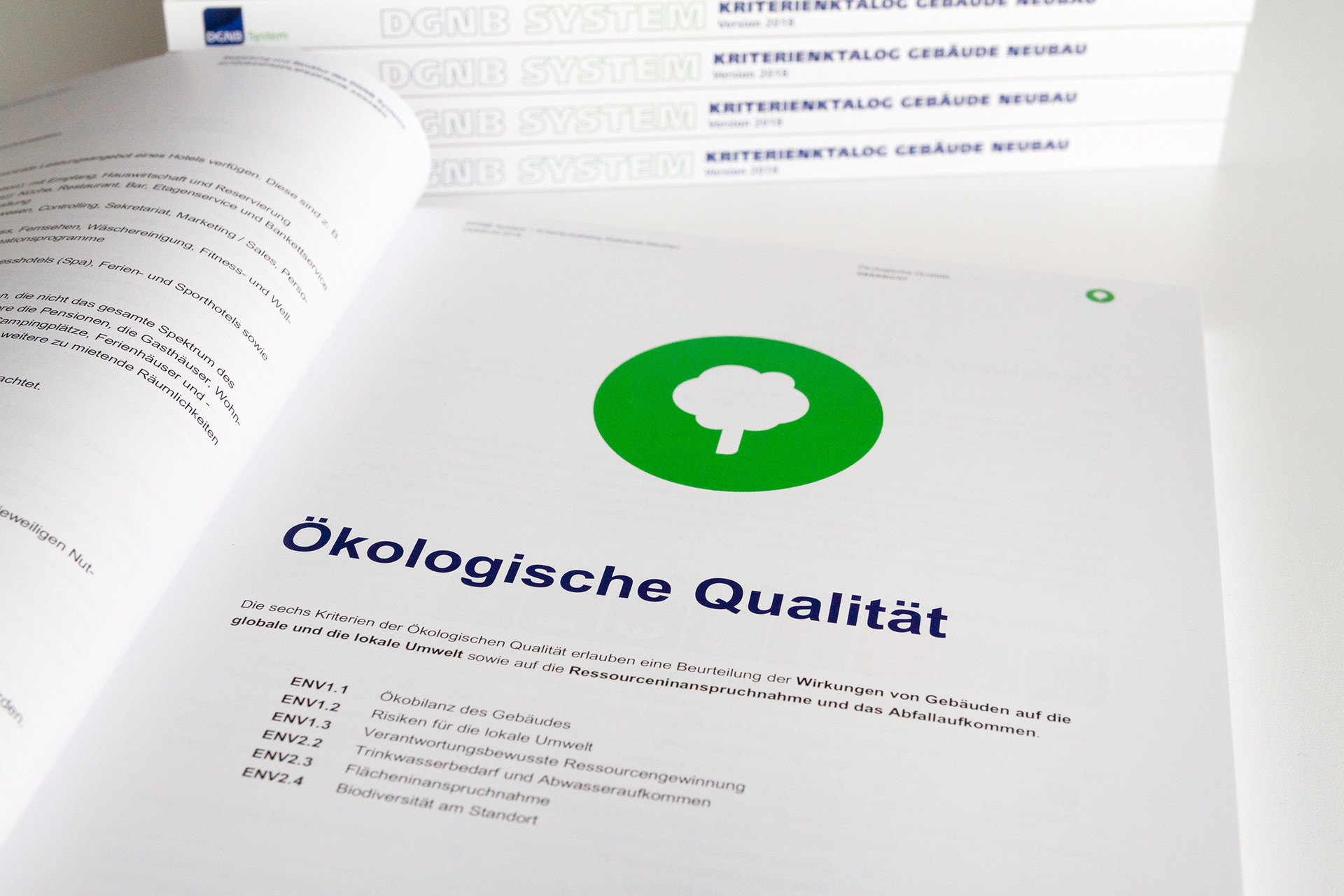Logistics buildings are diverse buildings for distribution, delivery and sales of goods. They are characterised by storage areas but also office workplaces, which are considered separately in the assessment. The scheme of logistics buildings is intended to take into account the various demands associated with them. These include, among other things, good indoor air quality, safety concepts and high indoor and outdoor amenity qualities. In addition, greater attention is being paid to the location of logistics buildings. For example, the aspect of accessibility for people and goods is given special attention in the assessment of logistics buildings.
The current DGNB Systems for New Construction of Buildings and Buildings In Use apply to logistics buildings. For international projects "New Construction of Buildings, Version 2020 International" and "Renovation of Buildings, Version 2022 International" apply. Exceptions are projects that have already been pre-certified with a previous market version. These projects may also be registered for the certificate in the same version.
- Contribution to climate action through reduced emissions of greenhouse gases over the entire life cycle
- High quality of indoor and outdoor spaces
- Increased well-being
- Increased attractiveness for employees
- Increased productivity and performance of employees
- Low vacancy risk
- High building flexibility due to e.g. easier adaptations in case of changes (operating processes; personnel)
- Lower costs for conversions
- Lower operating and maintenance costs
- Advantages when selling real estate
The certificate is aimed at anyone who wants to plan and construct a logistics building. This can be project development offices, companies as owner-occupiers or real estate funds. Anyone who wants to purchase such a property or rent it for use can use the DGNB Certificate as independently verified proof of the holistic quality of the building.
- Holistic consideration of all relevant sustainability requirements
- Transparent and independent quality award and assurance during planning, construction and operation
- Transparency with regard to ressource efficency and emissions
- Communication of the project to the public and increase of acceptance
- International applicability and comparability
- Reduced effort for DGNB Certification of Buildings due to the creditability of documentation from district certification
- Basis for sale in sustainable real estate funds
- Certification as an option for sustainable investments
- Contribution to the United Nations Sustainable Development Goals (SDGs)
- High value stability
- Higher return on investment
- High degree of future security through reduction of cost-intensive risks
Selected DGNB certified projects

Logistics Buildings

Logistics Buildings
Available criteria sets in English
Project registration

To register a project, clients must first hire a DGNB Auditor. This auditor can then register the project. Auditors also accompany the entire process and take over the verification and submission to the DGNB. They are active worldwide and specialise in certain schemes.
The current DGNB Systems "New Construction of Buildings, Version 2018" and "Buildings In Use, Version 2020" apply. The current DGNB Systems "New Construction of Building, Version 2020 International" and "Renovation of Buildings, Version 2022 International" apply to international projects.

